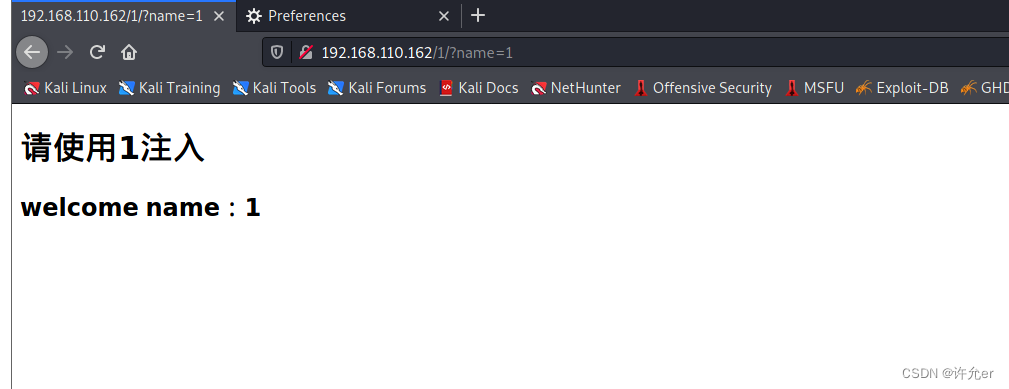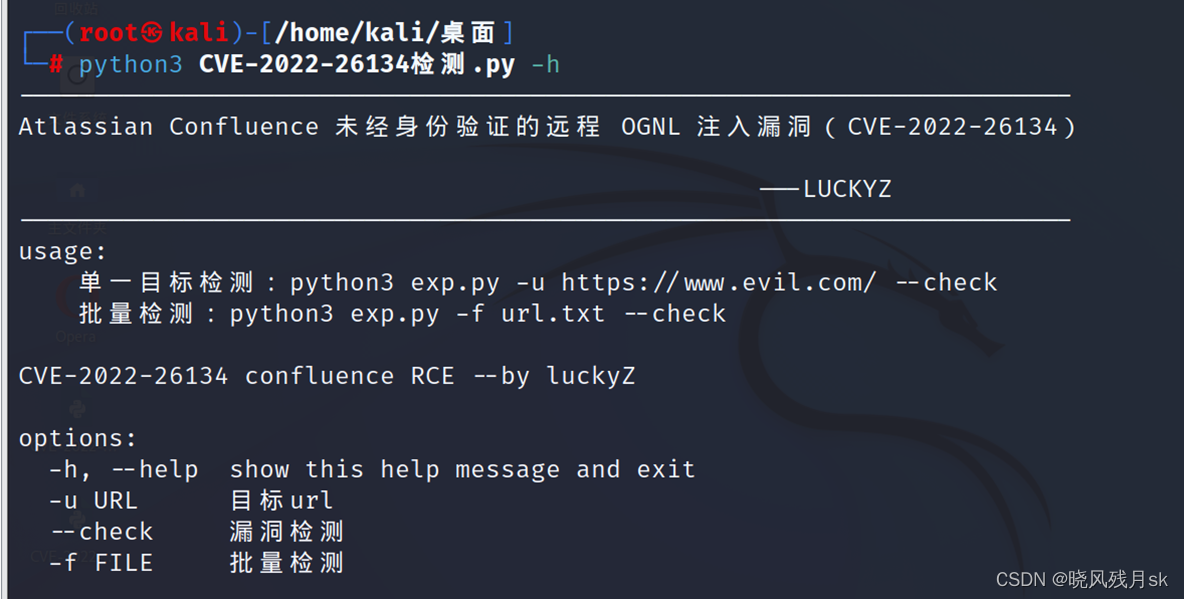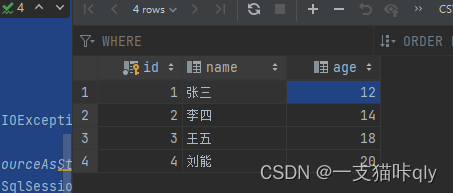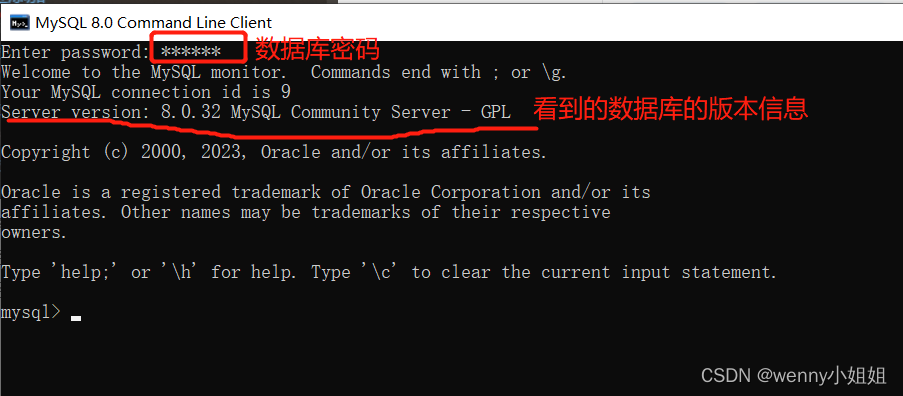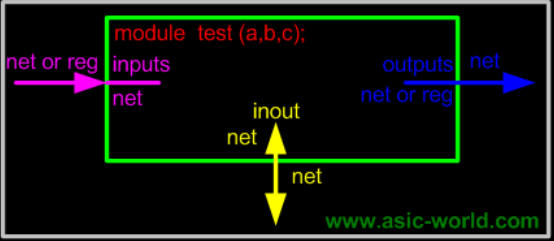kafka 从入门到精通
安装
zookeeper模式
创建软件目录
mkdir /opt/soft
cd /opt/soft
下载
wget https://downloads.apache.org/kafka/3.4.0/kafka_2.13-3.4.0.tgz
解压
tar -zxvf kafka_2.13-3.4.0.tgz
修改目录名称
mv kafka_2.13-3.4.0 kafka
配置环境变量
vim /etc/profile
export KAFKA_HOME=/opt/soft/kafka
export PATH=$PATH:$KAFKA_HOME/bin
修改配置文件
配置文件存放在 kafka/config目录
# 在每个节点创建目录
mkdir -p /opt/soft/kafka-logs
vim /opt/soft/kafka/config/server.properties
主要修改以下三个参数:
broker.id=1 注意不同的节点id号不同
log.dirs=/tmp/kafka-logs 修改为 log.dirs=/opt/soft/kafka-logs
zookeeper.connect=localhost:2181 修改为
zookeeper.connect=spark01:2181,spark02:2181,spark03:2181/kafka
# Licensed to the Apache Software Foundation (ASF) under one or more
# contributor license agreements. See the NOTICE file distributed with
# this work for additional information regarding copyright ownership.
# The ASF licenses this file to You under the Apache License, Version 2.0
# (the "License"); you may not use this file except in compliance with
# the License. You may obtain a copy of the License at
#
# http://www.apache.org/licenses/LICENSE-2.0
#
# Unless required by applicable law or agreed to in writing, software
# distributed under the License is distributed on an "AS IS" BASIS,
# WITHOUT WARRANTIES OR CONDITIONS OF ANY KIND, either express or implied.
# See the License for the specific language governing permissions and
# limitations under the License.
#
# This configuration file is intended for use in ZK-based mode, where Apache ZooKeeper is required.
# See kafka.server.KafkaConfig for additional details and defaults
#
############################# Server Basics #############################
# The id of the broker. This must be set to a unique integer for each broker.
broker.id=1
############################# Socket Server Settings #############################
# The address the socket server listens on. If not configured, the host name will be equal to the value of
# java.net.InetAddress.getCanonicalHostName(), with PLAINTEXT listener name, and port 9092.
# FORMAT:
# listeners = listener_name://host_name:port
# EXAMPLE:
# listeners = PLAINTEXT://your.host.name:9092
#listeners=PLAINTEXT://:9092
# Listener name, hostname and port the broker will advertise to clients.
# If not set, it uses the value for "listeners".
#advertised.listeners=PLAINTEXT://your.host.name:9092
# Maps listener names to security protocols, the default is for them to be the same. See the config documentation for more details
#listener.security.protocol.map=PLAINTEXT:PLAINTEXT,SSL:SSL,SASL_PLAINTEXT:SASL_PLAINTEXT,SASL_SSL:SASL_SSL
# The number of threads that the server uses for receiving requests from the network and sending responses to the network
num.network.threads=3
# The number of threads that the server uses for processing requests, which may include disk I/O
num.io.threads=8
# The send buffer (SO_SNDBUF) used by the socket server
socket.send.buffer.bytes=102400
# The receive buffer (SO_RCVBUF) used by the socket server
socket.receive.buffer.bytes=102400
# The maximum size of a request that the socket server will accept (protection against OOM)
socket.request.max.bytes=104857600
############################# Log Basics #############################
# A comma separated list of directories under which to store log files
log.dirs=/opt/soft/kafka-logs
# The default number of log partitions per topic. More partitions allow greater
# parallelism for consumption, but this will also result in more files across
# the brokers.
num.partitions=1
# The number of threads per data directory to be used for log recovery at startup and flushing at shutdown.
# This value is recommended to be increased for installations with data dirs located in RAID array.
num.recovery.threads.per.data.dir=1
############################# Internal Topic Settings #############################
# The replication factor for the group metadata internal topics "__consumer_offsets" and "__transaction_state"
# For anything other than development testing, a value greater than 1 is recommended to ensure availability such as 3.
offsets.topic.replication.factor=1
transaction.state.log.replication.factor=1
transaction.state.log.min.isr=1
############################# Log Flush Policy #############################
# Messages are immediately written to the filesystem but by default we only fsync() to sync
# the OS cache lazily. The following configurations control the flush of data to disk.
# There are a few important trade-offs here:
# 1. Durability: Unflushed data may be lost if you are not using replication.
# 2. Latency: Very large flush intervals may lead to latency spikes when the flush does occur as there will be a lot of data to flush.
# 3. Throughput: The flush is generally the most expensive operation, and a small flush interval may lead to excessive seeks.
# The settings below allow one to configure the flush policy to flush data after a period of time or
# every N messages (or both). This can be done globally and overridden on a per-topic basis.
# The number of messages to accept before forcing a flush of data to disk
#log.flush.interval.messages=10000
# The maximum amount of time a message can sit in a log before we force a flush
#log.flush.interval.ms=1000
############################# Log Retention Policy #############################
# The following configurations control the disposal of log segments. The policy can
# be set to delete segments after a period of time, or after a given size has accumulated.
# A segment will be deleted whenever *either* of these criteria are met. Deletion always happens
# from the end of the log.
# The minimum age of a log file to be eligible for deletion due to age
log.retention.hours=168
# A size-based retention policy for logs. Segments are pruned from the log unless the remaining
# segments drop below log.retention.bytes. Functions independently of log.retention.hours.
#log.retention.bytes=1073741824
# The maximum size of a log segment file. When this size is reached a new log segment will be created.
#log.segment.bytes=1073741824
# The interval at which log segments are checked to see if they can be deleted according
# to the retention policies
log.retention.check.interval.ms=300000
############################# Zookeeper #############################
# Zookeeper connection string (see zookeeper docs for details).
# This is a comma separated host:port pairs, each corresponding to a zk
# server. e.g. "127.0.0.1:3000,127.0.0.1:3001,127.0.0.1:3002".
# You can also append an optional chroot string to the urls to specify the
# root directory for all kafka znodes.
zookeeper.connect=spark01:2181,spark02:2181,spark03:2181/kafka
# Timeout in ms for connecting to zookeeper
zookeeper.connection.timeout.ms=18000
############################# Group Coordinator Settings #############################
# The following configuration specifies the time, in milliseconds, that the GroupCoordinator will delay the initial consumer rebalance.
# The rebalance will be further delayed by the value of group.initial.rebalance.delay.ms as new members join the group, up to a maximum of max.poll.interval.ms.
# The default value for this is 3 seconds.
# We override this to 0 here as it makes for a better out-of-the-box experience for development and testing.
# However, in production environments the default value of 3 seconds is more suitable as this will help to avoid unnecessary, and potentially expensive, rebalances during application startup.
group.initial.rebalance.delay.ms=0
分发配置到其它节点
scp -r /opt/soft/kafka root@spark02:/opt/soft/kafka
scp -r /opt/soft/kafka root@spark03:/opt/soft/kafka
scp -r /etc/profile root@spark02:/etc
scp -r /etc/profile root@spark03:/etc
在所有节点刷新环境变量
source /etc/profile
启动停止
在每个节点分别启动
kafka-server-start.sh -daemon /opt/soft/kafka/config/server.properties
kafka-server-stop.sh
启动脚本
vim kafka-service.sh
#!/bin/bash
case $1 in
"start"){
for i in spark01 spark02 spark03
do
echo ------------- kafka $i 启动 ------------
ssh $i "/opt/soft/kafka/bin/kafka-server-start.sh -daemon /opt/soft/kafka/config/server.properties"
done
}
;;
"stop"){
for i in spark01 spark02 spark03
do
echo ------------- kafka $i 停止 ------------
ssh $i "/opt/soft/kafka/bin/kafka-server-stop.sh"
done
}
esac
kraft模式
创建软件目录
mkdir /opt/soft
cd /opt/soft
下载
wget https://downloads.apache.org/kafka/3.4.0/kafka_2.13-3.4.0.tgz
解压
tar -zxvf kafka_2.13-3.4.0.tgz
修改目录名称
mv kafka_2.13-3.4.0 kafka
配置环境变量
vim /etc/profile
export KAFKA_HOME=/opt/soft/kafka
export PATH=$PATH:$KAFKA_HOME/bin
修改配置文件
配置文件存放在 kafka/config/kraft目录
# 在每个节点创建目录
mkdir -p /opt/soft/kraft-combined-logs
vim /opt/soft/kafka/config/kraft/server.properties
主要修改以下三个参数:
- process.roles=broker,controller
- node.id=1 注意不同的节点id号不同
- controller.quorum.voters=controller.quorum.voters=1@localhost:9093 修改为 controller.quorum.voters=controller.quorum.voters=1@spark01:9093,2@spark02:9093,3@spark03:9093
- advertised.listeners=PLAINTEXT://localhost:9092 修改为 advertised.listeners=PLAINTEXT://spark01:9092
- log.dirs=/tmp/kraft-combined-logs 修改为 log.dirs=/opt/soft/kraft-combined-logs
# Licensed to the Apache Software Foundation (ASF) under one or more
# contributor license agreements. See the NOTICE file distributed with
# this work for additional information regarding copyright ownership.
# The ASF licenses this file to You under the Apache License, Version 2.0
# (the "License"); you may not use this file except in compliance with
# the License. You may obtain a copy of the License at
#
# http://www.apache.org/licenses/LICENSE-2.0
#
# Unless required by applicable law or agreed to in writing, software
# distributed under the License is distributed on an "AS IS" BASIS,
# WITHOUT WARRANTIES OR CONDITIONS OF ANY KIND, either express or implied.
# See the License for the specific language governing permissions and
# limitations under the License.
#
# This configuration file is intended for use in KRaft mode, where
# Apache ZooKeeper is not present. See config/kraft/README.md for details.
#
############################# Server Basics #############################
# The role of this server. Setting this puts us in KRaft mode
process.roles=broker,controller
# The node id associated with this instance's roles
node.id=1
# The connect string for the controller quorum
controller.quorum.voters=1@spark01:9093,2@spark02:9093,3@spark03:9093
############################# Socket Server Settings #############################
# The address the socket server listens on.
# Combined nodes (i.e. those with `process.roles=broker,controller`) must list the controller listener here at a minimum.
# If the broker listener is not defined, the default listener will use a host name that is equal to the value of java.net.InetAddress.getCanonicalHostName(),
# with PLAINTEXT listener name, and port 9092.
# FORMAT:
# listeners = listener_name://host_name:port
# EXAMPLE:
# listeners = PLAINTEXT://your.host.name:9092
listeners=PLAINTEXT://:9092,CONTROLLER://:9093
# Name of listener used for communication between brokers.
inter.broker.listener.name=PLAINTEXT
# Listener name, hostname and port the broker will advertise to clients.
# If not set, it uses the value for "listeners".
advertised.listeners=PLAINTEXT://spark01:9092
# A comma-separated list of the names of the listeners used by the controller.
# If no explicit mapping set in `listener.security.protocol.map`, default will be using PLAINTEXT protocol
# This is required if running in KRaft mode.
controller.listener.names=CONTROLLER
# Maps listener names to security protocols, the default is for them to be the same. See the config documentation for more details
listener.security.protocol.map=CONTROLLER:PLAINTEXT,PLAINTEXT:PLAINTEXT,SSL:SSL,SASL_PLAINTEXT:SASL_PLAINTEXT,SASL_SSL:SASL_SSL
# The number of threads that the server uses for receiving requests from the network and sending responses to the network
num.network.threads=3
# The number of threads that the server uses for processing requests, which may include disk I/O
num.io.threads=8
# The send buffer (SO_SNDBUF) used by the socket server
socket.send.buffer.bytes=102400
# The receive buffer (SO_RCVBUF) used by the socket server
socket.receive.buffer.bytes=102400
# The maximum size of a request that the socket server will accept (protection against OOM)
socket.request.max.bytes=104857600
############################# Log Basics #############################
# A comma separated list of directories under which to store log files
log.dirs=/opt/soft/kraft-combined-logs
# The default number of log partitions per topic. More partitions allow greater
# parallelism for consumption, but this will also result in more files across
# the brokers.
num.partitions=1
# The number of threads per data directory to be used for log recovery at startup and flushing at shutdown.
# This value is recommended to be increased for installations with data dirs located in RAID array.
num.recovery.threads.per.data.dir=1
############################# Internal Topic Settings #############################
# The replication factor for the group metadata internal topics "__consumer_offsets" and "__transaction_state"
# For anything other than development testing, a value greater than 1 is recommended to ensure availability such as 3.
offsets.topic.replication.factor=1
transaction.state.log.replication.factor=1
transaction.state.log.min.isr=1
############################# Log Flush Policy #############################
# Messages are immediately written to the filesystem but by default we only fsync() to sync
# the OS cache lazily. The following configurations control the flush of data to disk.
# There are a few important trade-offs here:
# 1. Durability: Unflushed data may be lost if you are not using replication.
# 2. Latency: Very large flush intervals may lead to latency spikes when the flush does occur as there will be a lot of data to flush.
# 3. Throughput: The flush is generally the most expensive operation, and a small flush interval may lead to excessive seeks.
# The settings below allow one to configure the flush policy to flush data after a period of time or
# every N messages (or both). This can be done globally and overridden on a per-topic basis.
# The number of messages to accept before forcing a flush of data to disk
#log.flush.interval.messages=10000
# The maximum amount of time a message can sit in a log before we force a flush
#log.flush.interval.ms=1000
############################# Log Retention Policy #############################
# The following configurations control the disposal of log segments. The policy can
# be set to delete segments after a period of time, or after a given size has accumulated.
# A segment will be deleted whenever *either* of these criteria are met. Deletion always happens
# from the end of the log.
# The minimum age of a log file to be eligible for deletion due to age
log.retention.hours=168
# A size-based retention policy for logs. Segments are pruned from the log unless the remaining
# segments drop below log.retention.bytes. Functions independently of log.retention.hours.
#log.retention.bytes=1073741824
# The maximum size of a log segment file. When this size is reached a new log segment will be created.
log.segment.bytes=1073741824
# The interval at which log segments are checked to see if they can be deleted according
# to the retention policies
log.retention.check.interval.ms=300000
分发配置到其它节点
scp -r /opt/soft/kafka root@spark02:/opt/soft/kafka
scp -r /opt/soft/kafka root@spark03:/opt/soft/kafka
scp -r /etc/profile root@spark02:/etc
scp -r /etc/profile root@spark03:/etc
在所有节点刷新环境变量
source /etc/profile
初始化集群数据目录
生成存储目录唯一 ID
kafka-storage.sh random-uuid
生成结果:
WReIuXKSRR2R-70AAVIfXQ
用该 ID 格式化 kafka 存储目录
注意:在每个节点都要执行一次
kafka-storage.sh format -t J7s9e8PPTKOO47PxzI39VA \
-c /opt/soft/kafka/config/kraft/server.properties
执行结果:
Formatting /opt/soft/kraft-combined-logs with metadata.version 3.4-IV0.
启动停止
在每个节点分别启动
kafka-server-start.sh -daemon /opt/soft/kafka/config/kraft/server.properties
kafka-server-stop.sh
启动脚本
vim kafka-service.sh
#!/bin/bash
case $1 in
"start"){
for i in spark01 spark02 spark03
do
echo ------------- kafka $i 启动 ------------
ssh $i "/opt/soft/kafka/bin/kafka-server-start.sh -daemon /opt/soft/kafka/config/kraft/server.properties"
done
}
;;
"stop"){
for i in spark01 spark02 spark03
do
echo ------------- kafka $i 停止 ------------
ssh $i "/opt/soft/kafka/bin/kafka-server-stop.sh"
done
}
esac
命令行操作
主题命令行
查看操作主题命令参数
bin/kafka-topics.sh
| 参数 | 描述 |
|---|---|
| –bootstrap-server <String: server toconnect to> | 连接的 Kafka Broker 主机名称和端口号 |
| –topic <String: topic> | 操作的 topic 名称 |
| –create | 创建主题 |
| –delete | 删除主题 |
| –alter | 修改主题 |
| –list | 查看所有主题 |
| –describe | 查看主题详细描述 |
| –partitions <Integer: # of partitions> | 设置分区数 |
| –replication-factor<Integer: replication factor> | 设置分区副本 |
| –config <String: name=value> | 更新系统默认的配置 |
查看当前服务器中的所有 topic
kafka-topics.sh --bootstrap-server spark01:9092,spark02:9092,spark03:9092 --list
创建 first topic
选项说明:
–topic 定义 topic 名
–partitions 定义分区数
–replication-factor 定义副本数
kafka-topics.sh --bootstrap-server spark01:9092,spark02:9092,spark03:9092 \
--topic lihaozhe --create --partitions 1 --replication-factor 3
查看主题详情
kafka-topics.sh --bootstrap-server spark01:9092,spark02:9092,spark03:9092 \
--describe --topic lihaozhe
执行结果:
Topic: first TopicId: kJWVrG0xQQSaFcrWGMYEGg PartitionCount: 1 ReplicationFactor: 3 Configs:
Topic: lihaozhe Partition: 0 Leader: 1 Replicas: 1,2,3 Isr: 1,2,3
修改分区数
注意:
分区数只能增加,不能减少
不能通过命令行的方式修改副本
kafka-topics.sh --bootstrap-server spark01:9092,spark02:9092,spark03:9092 \
--alter --topic lihaozhe --partitions 3
执行成功后再次查看主题详细信息结果如下:
Topic: first TopicId: kJWVrG0xQQSaFcrWGMYEGg PartitionCount: 3 ReplicationFactor: 3 Configs:
Topic: lihaozhe Partition: 0 Leader: 1 Replicas: 1,2,3 Isr: 1,2,3
Topic: lihaozhe Partition: 1 Leader: 2 Replicas: 2,3,1 Isr: 2,3,1
Topic: lihaozhe Partition: 2 Leader: 3 Replicas: 3,1,2 Isr: 3,1,2
生产者命令行
查看操作生产者命令参数
kafka-console-producer.sh
| 参数 | 描述 |
|---|---|
| –bootstrap-server <String: server toconnect to> | 连接的 Kafka Broker 主机名称和端口号 |
| –topic <String: topic> | 操作的 topic 名称 |
| –key.serializer | 指定发送消息的 key 的序列化类 一定要写全类名 |
| –value.serializer | 指定发送消息的 value 的序列化类 一定要写全类名 |
| –buffer.memory | RecordAccumulator 缓冲区总大小,默认 32Mb |
| –batch.size | 缓冲区一批数据最大值,默认 16Kb。 适当增加该值,可以提高吞吐量, 但是如果该值设置太大,会导致数据传输延迟增加 |
| –linger.ms | 如果数据迟迟未达到 batch.size,sender 等待 linger.time之后就会发送数据。 单位 ms,默认值是 0ms,表示没有延迟。 生产环境建议该值大小为 5-100ms 之间。 |
| –acks | 0:生产者发送过来的数据,不需要等数据落盘应答 1:生产者发送过来的数据,Leader 收到数据后应答 -1(all):生产者发送过来的数据,Leader+和 isr 队列里面的所有节点收齐数据后应答 默认值是-1,-1 和all 是等价的 |
| –max.in.flight.requests.per.connection | 允许最多没有返回 ack 的次数,默认为 5, 开启幂等性要保证该值是 1-5 的数字 |
| –retries | 当消息发送出现错误的时候,系统会重发消息 retries表示重试次数。默认是 int 最大值,2147483647 如果设置了重试,还想保证消息的有序性,需要设置 MAX_IN_FLIGHT_REQUESTS_PER_CONNECTION=1 否则在重试此失败消息的时候,其他的消息可能发送成功了 |
| –retry.backoff.ms | 两次重试之间的时间间隔,默认是 100ms |
| –enable.idempotence | 是否开启幂等性,默认 true,开启幂等性。 |
| –compression.type | 生产者发送的所有数据的压缩方式。 默认是 none,也就是不压缩 支持压缩类型:none、gzip、snappy、lz4 和 zstd |
发送消息
kafka-console-producer.sh --bootstrap-server spark01:9092,spark02:9092,spark03:9092 --topic lihaozhe
消费者命令行
查看操作消费者命令参数
kafka-console-consumer.sh
| 参数 | 描述 |
|---|---|
| –bootstrap-server <String: server toconnect to> | 连接的 Kafka Broker 主机名称和端口号 |
| –topic <String: topic> | 操作的 topic 名称 |
| –from-beginning | 从头开始消费 |
| –group <String: consumer group id> | 指定消费者组名称 |
消费 first 主题中的数据
kafka-console-consumer.sh --bootstrap-server spark01:9092,spark02:9092,spark03:9092 \
--topic lihaozhe
把主题中所有的数据都读取出来
包括历史数据
kafka-console-consumer.sh --bootstrap-server spark01:9092,spark02:9092,spark03:9092 \
--topic lihaozhe --from-beginning
生产者
生产者发送数据流程

RecordAccumulator:每一个是生产上都会维护一个固定大小的内存空间,主要用于合并单条消息,进行批量发送,提高吞吐量,减少带宽消耗。
RecordAccumulator的大小是可配置的,可以配置buffer.memory来修改缓冲区大小,默认值为:33554432(32M)
RecordAccumulator内存结构分为两部分
第一部分为已经使用的内存,这一部分主要存放了很多的队列。
每一个主题的每一个分区都会创建一个队列,来存放当前分区下待发送的消息集合。
第二部分为未使用的内存,这一部分分为已经池化后的内存和未池化的整个剩余内存(nonPooledAvailableMemory)。
池化的内存的会根据batch.size(默认值为16K)的配置进行池化多个ByteBuffer,
放入一个队列中。所有的剩余空间会形成一个未池化的剩余空间。







